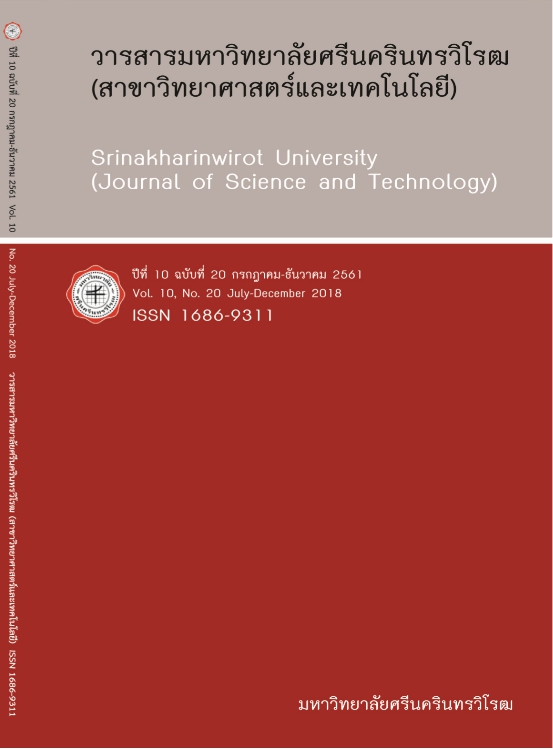ปริมาณคาร์บอนสะสมในต้นไม้ บริเวณมหาวิทยาลัยราชภัฏนครศรีธรรมราช CARBON STOCK OF TREES IN NAKHON SI THAMMARAT RAJABHAT UNIVERSITY
Keywords:
Carbon Stock, Biomass, Carbon SequestrationAbstract
This study aims to assess the carbon stock of trees in Nakhon Si ThammaratRajabhat University By setting up the 50x300 m., sampling for 4 plots, and then recording the DBH (Diameter at Breast Height). The biomass was estimated using by allometric equation and carbon stock was calculated by multiplying the biomass with a 0.5 of conversion factor. As the result, the total of 1,653 trees in the study area was the highest. The first research plots were 615 trees or 37.20% and second research plots is least were 337 trees, accounting for 20.38%. Total of the carbon stock were 567,919.20 kilograms or 567.92 tons, the most is first research plots were 240,489.03 kilograms, or 42.35% and least is second research plots were 45,708.33 kilograms, or 8.05 %.
Downloads
References
[2] Thailand Greenhouse Gas Management Organization. (2010). Guidelines for development of greenhouse gas emission reduction projects in the forestry. Bangkok: Amarin Printing & Publishing Public Company Limited.
[3] Thepsud, M. (2008). Knowledge of global warming in Thailand. Bangkok: Institute of General Education, Sripatum University.
[4] Brown, S., Gillespie, A.; and Lugo, A. (1989). Biomass estimation methods for tropicalforests with applications to forest inventory data. Forest Sci. 35: 881-902.
[5] Puangchit, L. (2004). Quantity of greenhouse gas emissions and storage from the change of land use and forestry. In Proceedings of Climate change in the forest. Bangkok: Department of National Parks, Wildlife and Plant Conservation.
[6] Srinapong, B. (2004). Flora in Nakhon Si Thammarat Rajabhat University. Nakhon Si Thammarat: Nakhon Si Thammarat Rajabhat University.
[7] Economic Wood Innovation Office. (2011). Report on Greenhouse Gas, Forest Sector, Forest Industry Organization. Retrieved August 25, 2015, from http://www.fio.co.th/institution/woodeconomy/main_web/data/GHG_FIO_report.pd
[8] Chernkhuntod, C. (2007). Aboveground carbon storage in eucalyptus urophylla plantation at Sakaerat silvicultural research station, Nakhon Rachasima province. Bachelor of Science. Bangkok: Kasetsart University.
[9] Janthuma, A. (2003). Para rubber (Hevea Brasiliensis) in the environment. Chachoengsao: Chachoengsao Rubber Research Center.
[10] Wiriyabancha, C.; and Washranggoon, T. (2005). Valuation of carbon in the forest ecosystem of Thailand. In Proceedings of the environmental crisis. Nakhon Pathom: Faculty of Environment and Resource Studies, Mahidol University.
[11] Pumjumnong, N. (2004). Greenhouse gas storage and land use change under the Tokyo Protocol. In Proceedings of the change in the forest. Bangkok: Department of National Parks, Wildlife and Plant Conservation.
Downloads
Published
How to Cite
Issue
Section
License
Srinakharinwirot University Journal of Sciences and Technology is licensed Under a Creative Commons Attribution-NonCommercial-NoDerivs 4.0 International (CC-BY-NC-ND 4.0) License, Unless Otherwise Stated. Please Read Journal Policies Page for More Information on Open Access, Copyright and Permissions.



